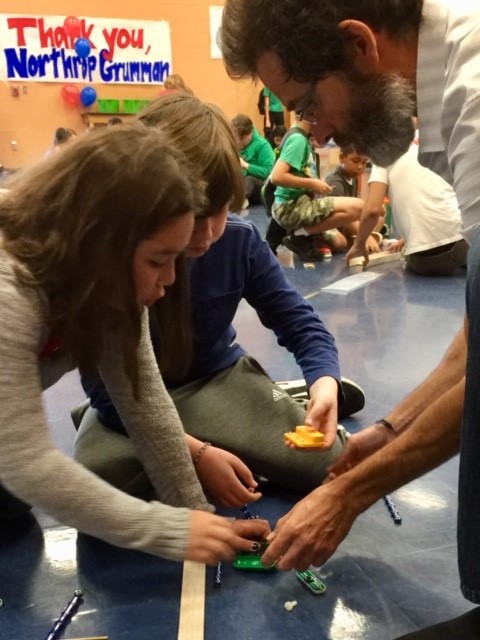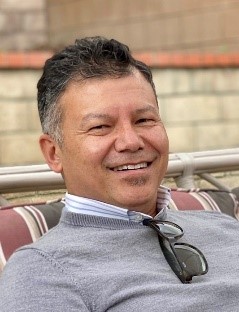Next Gen Navigator
Building Community to Create Your STEM Ecosystem
By Andy de Serière
Posted on 2020-09-24
Disclaimer: The views expressed in this blog post are those of the author(s) and do not necessarily reflect the official position of the National Science Teaching Association (NSTA).
Launching a science, technology, engineering, and math (STEM) program by yourself is hard work! You get some training, buy supplies, and rely mostly on yourself to build it! That’s how I started.
In 2012, I was among the first teachers to join our middle school project-based STEM program. Eight years later, we’ve expanded our program from 65 to 650 students per year, and we offer afterschool programs as well!
Reflecting on this journey, I realize building a community toward a STEM ecosystem is crucial! So many resources are available outside your school walls: parents, local businesses, other schools in your district, universities, former students, STEM professionals, and philanthropic groups. Once you adopt the “create an ecosystem” mindset, many people and organizations will want to help; your top challenge is channeling the support.
Five years ago, I was able to help our community take a big step toward this goal by becoming a member of the Northrop Grumman Foundation Teachers Academy. This professional learning program was established to build middle school teachers’ confidence and pedagogy too-kit for teaching science, engineering, math, and technology, while increasing their understanding of workforce skills needed to succeed in STEM careers. This was a game changer! One program component of the Academy connects teachers to STEM industry experts through an immersive externship at a local Northrop Grumman facility, where participants are partnered with an engineer/technologist to observe and experience critical workforce skills in action.
I had the privilege of working with three teachers, Tracy Tegtmeier, Zobeida Merlos, and Rebecca Allen, who were in the Academy from nearby school districts. Following a tour of the Northrop Grumman FAB (Fabrication)Lab makerspace, we left inspired to model this industry practice so students could get firsthand experience of how engineers collaborate to innovate and solve challenges. Since 2016, my colleagues and I have held Saturday “South Bay Engineering Hackathons” attended by more than 1,000 participants. Our group decided we would have the greatest impact if we all took turns hosting different themed engineering hackathons at each of our schools and invited more school districts to join us. These engineering hackathons were a success, and we began sharing our experiences at state and national conferences.

Thus energized, we devised more strategies to grow our community that may also work for your STEM community:
Consider any STEM professional a potentially invaluable resource.
- Our goal is for every student to say, “I know an engineer.” The Los Angeles area has thousands of engineers and STEM professionals. Each of them has a story they are often eager to share with your students. Wiseburn Unified School District is located just south of Los Angeles Airport and serves students who live within our district boundaries and in surrounding communities. We use this to our advantage and actively recruit STEM businesses and professionals, casting a wide net. We send an invitation detailing how many STEM professionals we need to volunteer, the time commitment required (usually 3–4 hours), and a brief description of the program.
- STEM professionals will have a wealth of knowledge to share, but they may not know how to work with your students. Spend time with the volunteers, “practice” the build project, and coach them with students. Many volunteers will tell you they learned, too, and have a fresh perspective about their career.
Create student competitions that don’t require prior experience in engineering.
- Competitions help ensure students understand they need practice to improve their skills. We also teach that “fail fast” is the best path to success, and it builds academic endurance, collaboration, creative problem solving, and eventually subject-matter experts or “SMEs.”
Ask for what you need.
- Need materials? Need help building storage solutions? Parents, staff, and the community want you to be successful and will help!
- During Back-to-School Night, I dedicated one wall to a supply wish list that I called the “Watch Us Grow Tree.” During my first year, parents bought tools, workbenches, and even supplies that I didn’t know I needed.
Seek volunteers from the school community and delegate.
- Recruit all-star parents to support your efforts. Don’t be afraid to delegate tasks like getting supplies, prepping materials, and serving snacks.
Build relationships with organizations that want to support STEM education.
- Many companies and philanthropic organizations want to help schools increase STEM literacy. Employers care about the local talent pool and the reputation of the business in the community and are prepared to help/sponsor if you provide opportunities.
So step outside your classroom to help create STEM opportunities for your students! It’s challenging, but you can build an incredible ecosystem full of innovation, creativity, and real-world STEM connections. Your greatest reward could be the human connections you will make through building community.
Resources
My Resource List of Ecosystem Partners

Andy de Serière is a STEM teacher at Richard Henry Dana Middle School and district Project Lead The Way coordinator for the Wiseburn Unified School District in El Segundo, California. He can be reached via e-mail at adeseriere@wiseburn.org.
Note: This article is featured in the September 2020 issue of Next Gen Navigator, a monthly e-newsletter from NSTA delivering information, insights, resources, and professional learning opportunities for science educators by science educators on the Next Generation Science Standards and three-dimensional instruction. Click here to sign up to receive the Navigator every month.
The mission of NSTA is to promote excellence and innovation in science teaching and learning for all.
NGSS Teacher Preparation Teaching Strategies Middle School


